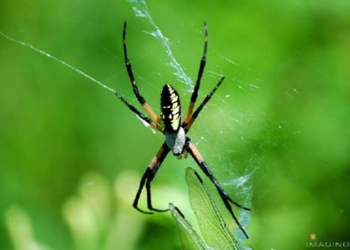Not only in Vietnam, but other Asian countries such as China, Thailand, Singapore, and Malaysia also have unique customs during the Ghost Month.

The 15th day of the 7th lunar month is the most important day of the Ghost Month in China. The Chinese believe that on this day, the gates of hell open, allowing all ghosts to ascend to the mortal world to seek food and enjoy the full moon. On this full moon day and throughout the Ghost Month, just like the Vietnamese, the Chinese prepare offerings, burn joss paper including money and clothes for their ancestors and other wandering souls. Through these acts, the Chinese aim to maintain the ancestral blessings, hoping for their ancestors’ protection over their descendants while also appeasing many other spirits. (Photo: China Daily).
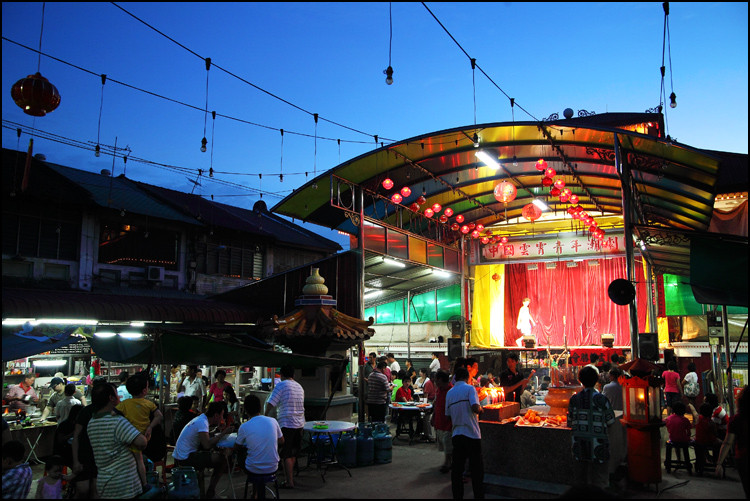
Outdoor theater performances are also an essential activity in China during the Ghost Month. The plays praise deities and are believed to bring joy to the spirits. Nowadays, they are performed in skyscrapers in major cities like Beijing. One might easily envision wandering spirits in ancient villages rather than in brightly lit urban areas. (Photo: China Daily).
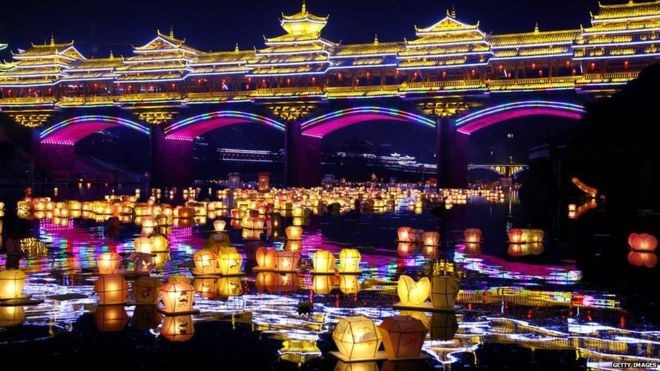
On the last day of the Ghost Month, the Chinese release lanterns into the rivers to guide spirits back to the underworld. During this month, they avoid going out at night for fear of being followed by spirits, refrain from swimming for fear of being drowned by ghosts, and avoid singing or whistling to prevent spirits from responding to them. (Photo: BBC).

Obon is an event for Japanese Buddhists held over three days in August each year. It is believed that during this time, the spirits of ancestors return to the earthly realm to visit their loved ones. On the first day, the Japanese visit the graves of their relatives and decorate them with fruits, cakes, and lanterns. On the second day, they prepare altars at home. At the top of the altar, memorial items for the ancestors are placed, along with offerings of vegetarian food. Vegetable figures made from cucumbers or eggplants are set on the altar, symbolizing the means to welcome the spirits. (Photo: savvytokyo).
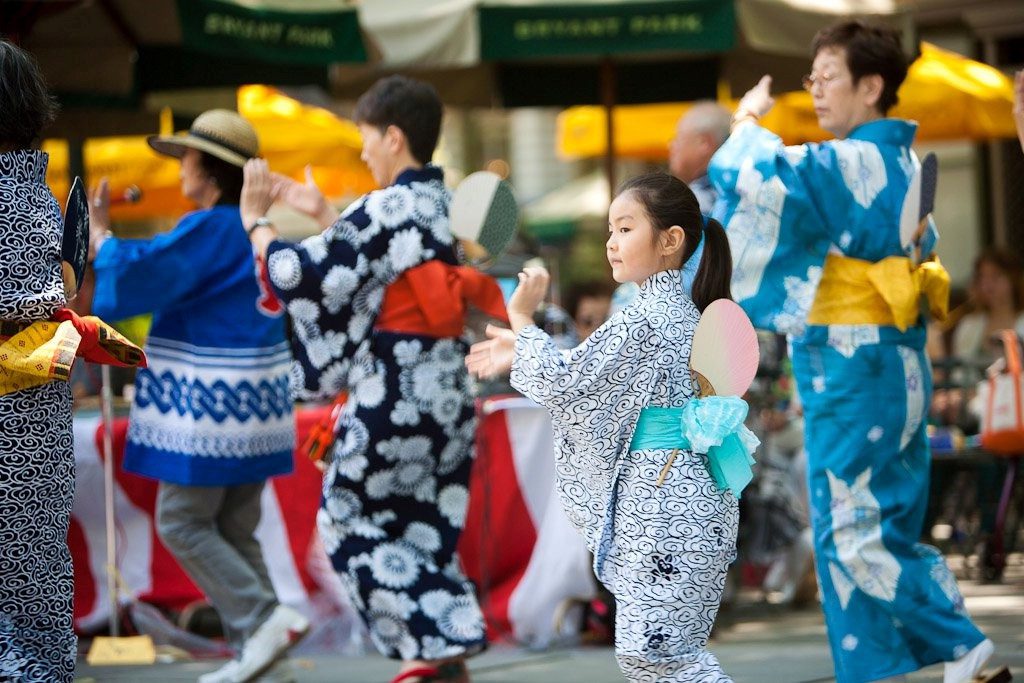
On the last day, the Japanese wear summer kimono (yukata) and join in the Obon dance (bon odori) in a circle. (Photo: sohdaiko).
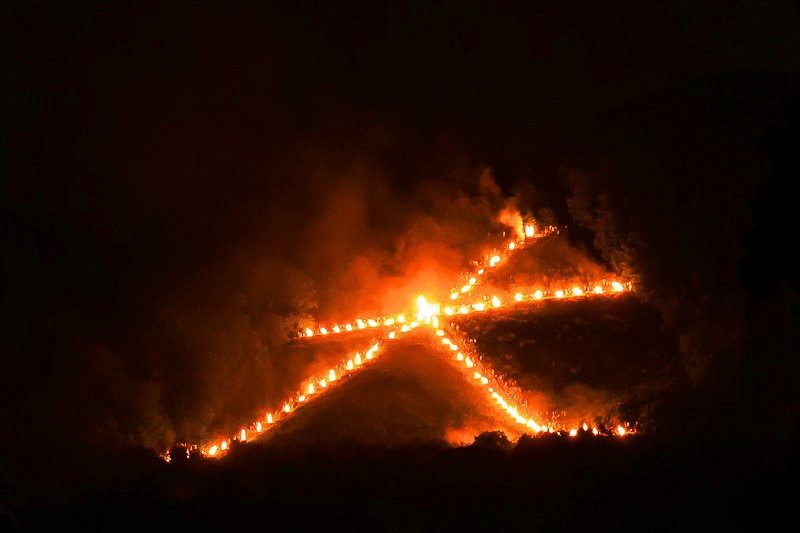
The fire offering ceremony during Obon takes place when five torches are lit on five mountains surrounding Kyoto for about an hour. This sacred fire ceremony aims to send the spirits of the deceased back after their visit to the earthly realm. Additionally, the Japanese can also witness fireworks during this festival. (Photo: sushiknife).
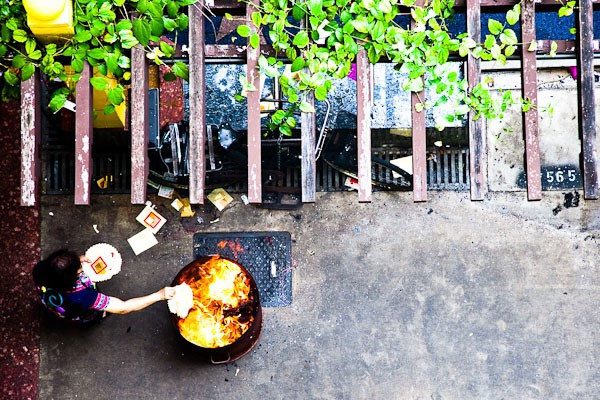
The Ghost Festival in Singapore also falls in the 7th lunar month. Here, people also burn incense to honor their ancestors and burn joss paper for the spirits. Additionally, they avoid moving houses or offices as it is believed that such actions will anger the residing spirits, and they refrain from killing insects or wearing red clothing for fear of being followed by malevolent forces. (Photo: Singapore Tourism Board).
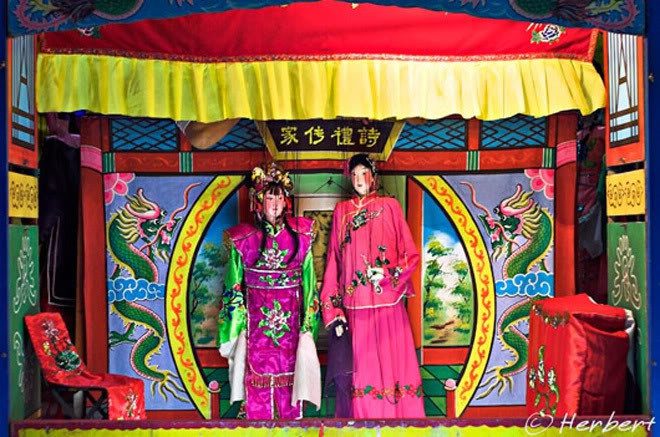
Singaporeans attend outdoor theater performances. The front row seats are left empty specifically for the spirits. Nowadays, these outdoor performances also feature singers. (Photo: travel-and-photography.blogspot).

Malaysia also has customs during the Ghost Month that are similar to those in China, such as releasing lanterns to send off spirits, offering items, and burning joss paper… Malaysians often place offerings by the roadside, believing that wandering spirits can take these items on their journey. (Photo: theborneopost).
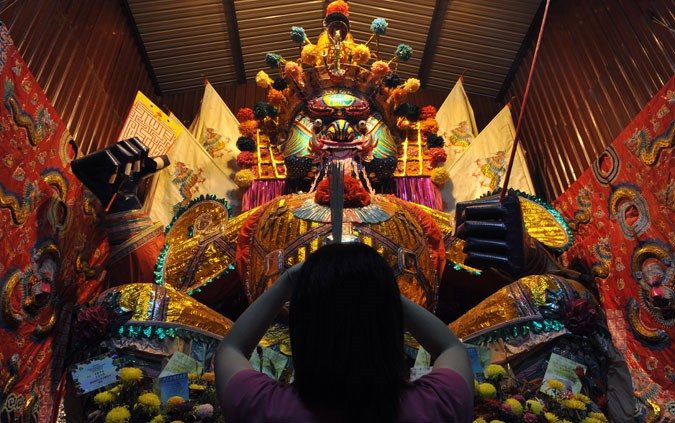
Buddhists also visit temples in Malaysia to pray for the spirits and burn effigies of guardian deities for the spirits at the end of the festival. (Photo: Saeed Khan / AFP / Getty).
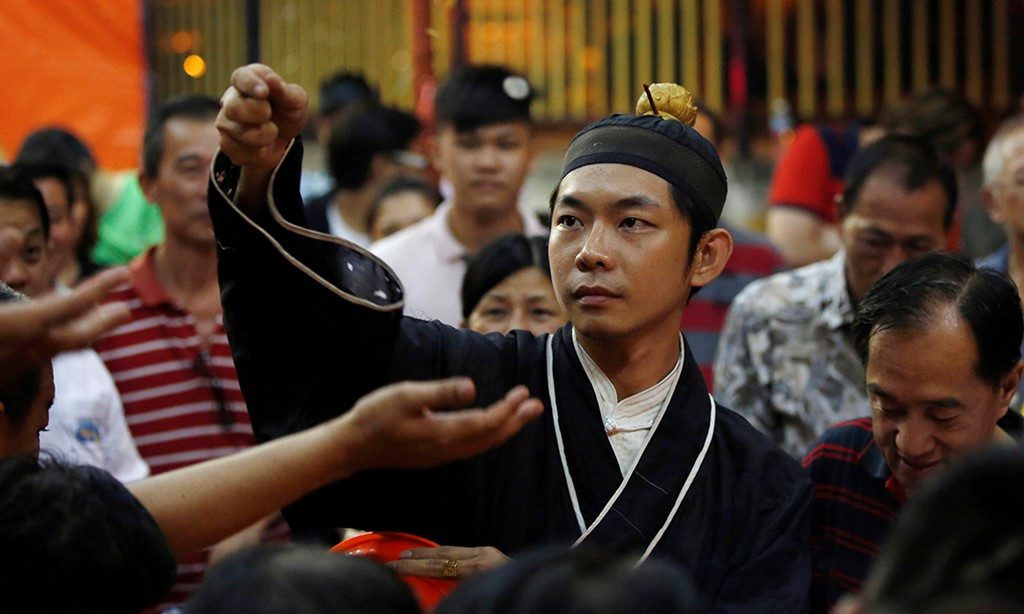
A priest tosses coins for devotees to pray for good luck during the Ghost Festival in Malaysia. (Photo: Reuters).
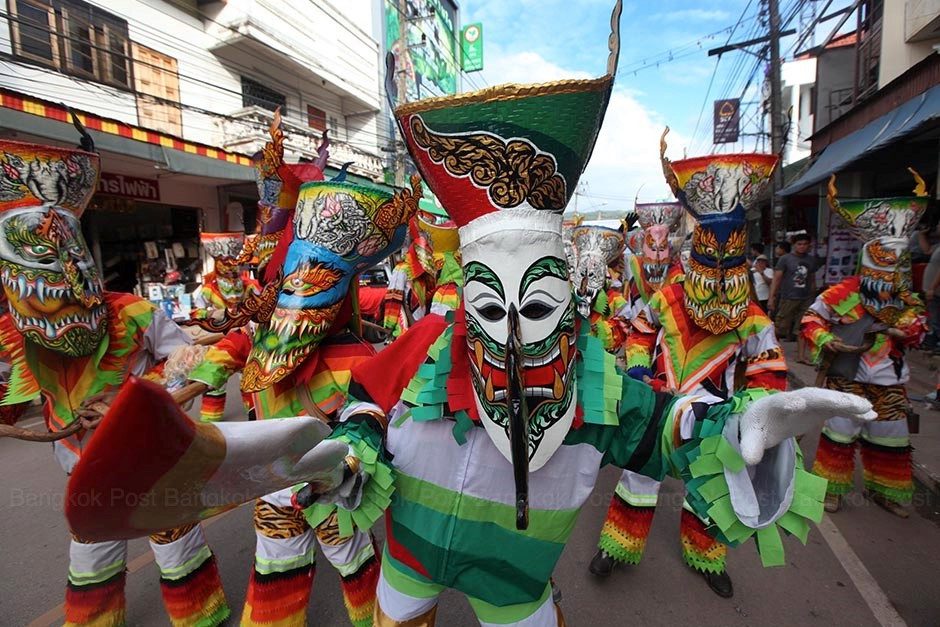
Thailand has a festival called Phi Ta Khon held over three days in June every year in Dan Sai district, Loei province, which celebrates the return of Prince Vessandorn after he left his village to embark on a long journey. According to local belief, the festive celebration is so grand that it wakes the spirits. Festival participants often dress as ghosts and wear masks. Many young people dance and perform fighting moves to represent the spirits through masks made from coconut tree trunks. The colorful Phi Ta Khon festival attracts a large number of tourists every year. (Photo: Bangkok Post).
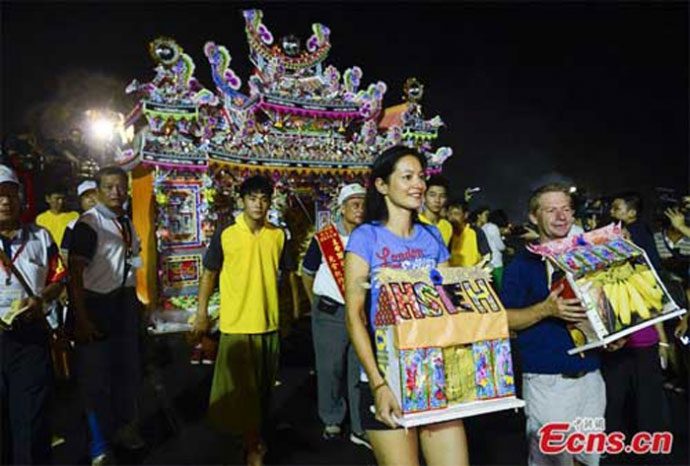
Ghost Festival in Taiwan: In Taiwan, the Ghost Festival is primarily held on the full moon day of the seventh month (15/7), consisting of three distinct parts: inviting the wandering spirits, offering food to them on the 15th, and sending them off on the 29th. On the day of the Ghost Festival, families prepare meat, fruits, fresh flowers, and other offerings either at temples or right in their front yards. Families with means may invite monks to their homes to perform rituals to pray for the souls of their ancestors and other unclaimed spirits. During this time, the people of Taiwan also hold various festivals, such as the ghost procession and large-scale lantern releases.

Offering to Wandering Spirits in Hong Kong: Approximately 1 to 2 million residents of Hong Kong are of Teochew descent (Guangdong, China), which is why the Ghost Festival in Hong Kong is celebrated according to Chinese customs. The Ghost Festival in Hong Kong is uniquely organized and extends throughout the entire lunar month of July. This event has been celebrated for over 100 years and is regarded as an intangible cultural heritage of Hong Kong. Throughout July, you will see people all over Hong Kong, in parks, squares, by the riverside, or open fields, performing rituals to honor their ancestors and the wandering spirits. They burn incense and paper money, distribute free rice, and may even perform operas or screen movies to entertain the spirits.
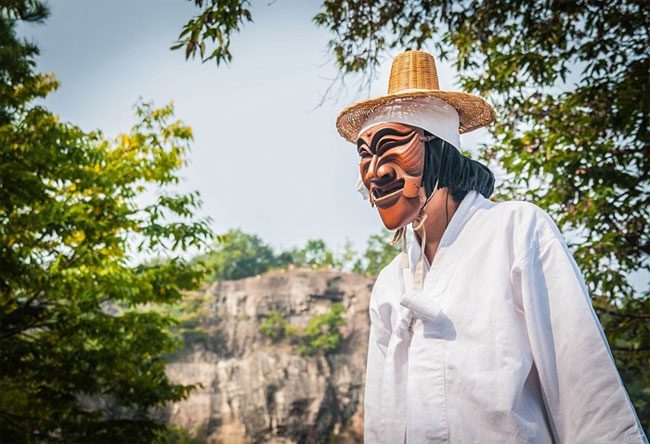
Customs of Offering to Wandering Spirits in South Korea – Sickle Washing Day: Traditionally, South Koreans refer to the full moon of the seventh month as Baekjung or Baekjong, meaning “100 varieties of grains,” as this is the time when many vegetables and fruits can be harvested. Additionally, this day is also known as the Vu Lan Bon Festival or Parents’ Day, a time to remember ancestors, express gratitude, and show respect to parents. In rural South Korea, on Baekjung Day of the lunar July, once all farming tasks are completed, farmers begin to rest and wait for the rice to ripen, so there is no need to use sickles anymore. Hence, this day is also called the “Sickle Washing Day.” Farmers participate in parades wearing traditional Hanbok attire, sometimes holding sticks and wearing masks to drive away evil spirits and pray for a bountiful harvest free from disturbances by wandering spirits.
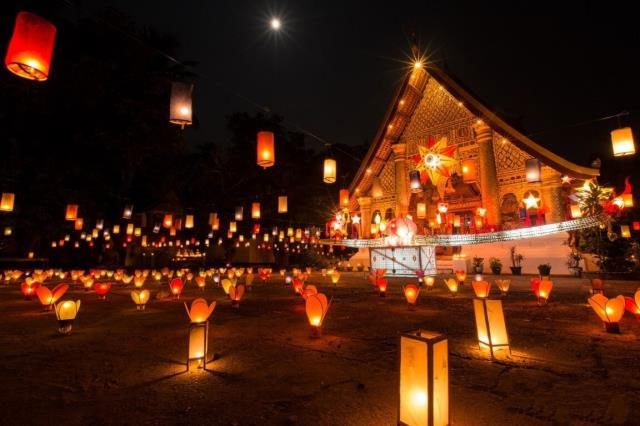
In Cambodia: Their Ghost Month falls in September of the Gregorian calendar every year. One of the important religious Khmer festivals in September is the Pchum Ben Festival, which lasts for 15 days. The Cambodian people wear white clothing and gather at temples to honor their ancestors, offering various items to the monks to “send” to the spirits of the deceased. Cambodians believe that during this festival, the spirits will visit their living relatives to atone for past mistakes from previous lives.
- “Ghost Month” – Taboos and Recommendations
- Vu Lan Festival and the Meaning of the Rose
- Common Misconceptions About Releasing Animals
- Wildfires – Drought – Floods: How the Earth Suffered in 2022 from a Satellite Perspective?
- Top 10 Strange Yet Fascinating Facts About Human Psychology You Probably Haven’t Heard Of










































